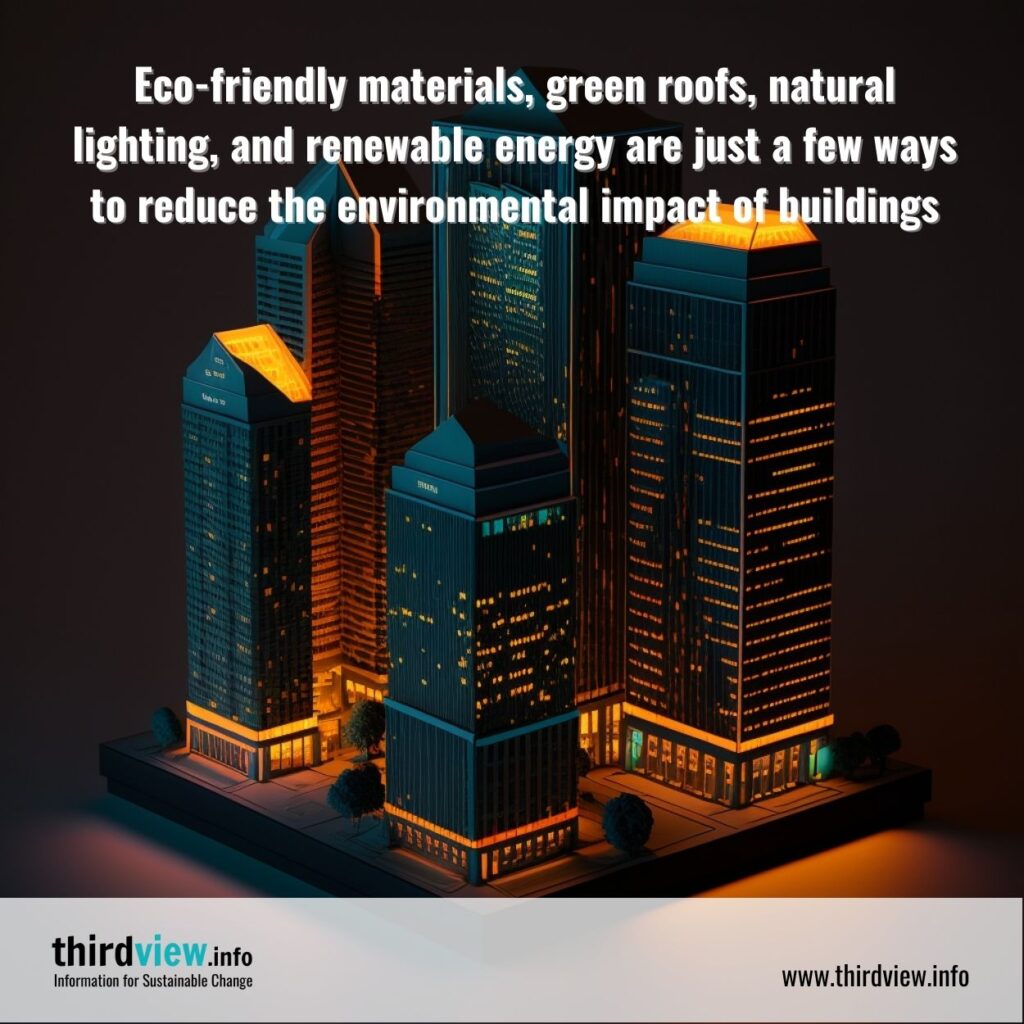As the world continues to grapple with climate change, it is essential that we look for ways to make buildings more sustainable. Buildings and construction account for a significant portion of global carbon emissions. Therefore, it is important that architects, builders, and developers take steps to reduce the environmental impact of their projects. In this blog post, let’s explore some ways to make our buildings more sustainable in order to create a healthier environment.
Reducing Carbon Footprint Through Design Choices
One way to reduce the environmental impact of buildings is by making design choices that reduce their carbon footprint. This includes using eco-friendly materials such as bamboo and reclaimed wood instead of concrete and steel. Additionally, utilizing green roofs can help reduce heating and cooling costs by allowing buildings to better regulate their temperatures naturally. Furthermore, incorporating natural light into building designs helps save energy since there will be less need for artificial lighting during daytime hours. Installing solar panels or wind turbines are an additional option for reducing energy consumption by generating clean energy onsite at the building.
Improving Building Performance Through Technology
Another way to make buildings more sustainable is by investing in technology that will help improve their performance over time. For example, sensors can be installed throughout the building so that airflow and ventilation can be tracked in real-time. This allows building owners to detect any inefficiencies or issues quickly so they can be addressed immediately before they become larger problems. Additionally, data collected from these sensors can be used to identify potential areas where efficiency improvements can be made within the building’s operations—such as adjusting temperatures or scheduling maintenance tasks—helping maximize energy savings over time. Finally, automated systems can also be used to control lighting levels based on occupancy levels in order to further increase energy efficiency throughout the building.
Encouraging Sustainable Practices Among Building Occupants
Finally, it is important that we encourage sustainable practices among those occupying the building as well. This includes providing educational resources about how individuals can reduce their own carbon footprints while at work or at home through simple changes such as switching off lights when not in use or turning down thermostats when leaving a room temporarily. Additionally, encouraging recycling programs within the space will help minimize waste while improving sustainability efforts throughout the entire facility. By educating occupants on making small changes every day towards living a greener lifestyle, we can create a healthier environment both inside and outside of our buildings on an individual level as well as collectively across our communities.
Making our buildings more sustainable requires effort from everyone involved—from architects planning out new designs all the way down to individual occupants who live or work in them every day—but it’s worth it. By taking steps such as using eco-friendly materials during construction; investing in technology that reduces energy consumption; and encouraging sustainable practices among those occupying the space; we can ultimately create healthier environments inside and outside of our buildings while helping mitigate climate change around us. So, let’s get started today.


